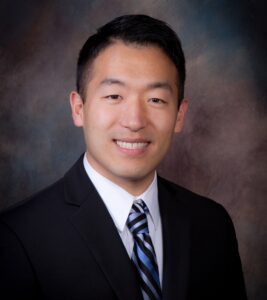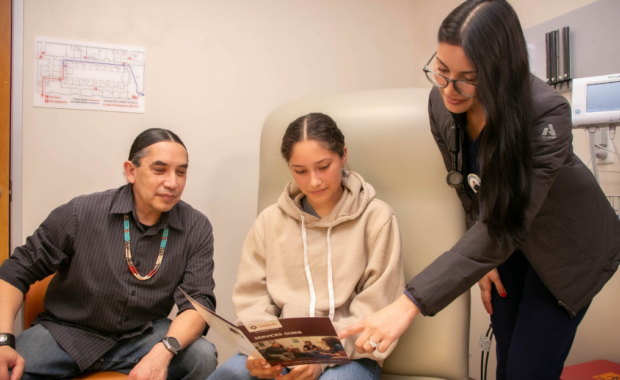PAs Create Program to Boost Representation of Black Men in the PA Profession
Increasing diversity within the workforce is a crucial step toward improving outcomes for patients
February 23, 2024
By Dave Andrews
Soon after Lucy Kibe, DrPH, MS, MHS, PA-C, began attending PA school in 2010, she noticed an obvious disparity: Out of the 85 total students in her class, only five were African American—and just two were Black men.
The portion of Black male PAs in Kibe’s class was an accurate reflection of the overall PA profession at the time. And 14 years later, the numbers haven’t significantly changed. According to the latest annual report from the National Commission on Certification of PAs, only 3.7% of all PAs identified themselves as Black.

“We are doing very poorly in representing Black men in our profession,” said Kibe, program director and associate professor at Charles R. Drew University of Medicine and Science (CDU). “This is especially concerning when you consider that African American men in general in this country have poorer health compared to other groups.”
Indeed, African Americans have higher mortality and morbidity rates compared to other races, according to the Centers for Disease Control and Prevention. Kibe noted that in 2021, the life expectancy at birth for Black men was 67 years, compared to national average of 76 years.
If more Black patients—particularly men—went to providers who were also Black, or who have been trained alongside Black peers, Kibe believes it would ultimately lead to better patient outcomes.
“Research has shown that when the provider shares similar characteristics as the patient or has trained with people who have the same background as the patient, they are more successful at connecting with them and establishing trust,” Kibe said.
In fact, according to a 2023 AAPA-Harris Poll survey, more than six in 10 Asian, Black, and Hispanic adults say they would feel more comfortable seeing a healthcare provider who shares their background.
Developing a Targeted Approach to Boost Diversity
Even at a historically Black university like CDU, the number of Black male PA students is still low. So, in 2021, Kibe set out to change that. Her aim was to reach Black men who had previously applied to PA school but, for various reasons, did not attend or did not get accepted.
She and her colleague Samuel Paik, MSPAS, PA-C, established the Empowering Diversity, Growth, and Excellence (EDGE-PA) program. The initiative recruits qualified Black men who are interested in becoming PAs and would benefit from mentorship and additional support.

EDGE-PA is a pipeline program offering participants a variety of tools such as course advisement, mock interviews, essay writing workshops, and application reviews. Another key component of the program is facilitating one-on-one mentorship opportunities with Black male PAs who can provide real-world insights about the skills and traits needed to be successful.
“Most of [the EDGE-PA participants] are those who just barely missed getting accepted into a PA program, and we don’t want them to fall through the cracks,” said Paik, who is an associate clinical coordinator, assistant professor and admission chair at the CDU PA program.
“It can be difficult, if not impossible, to accurately measure characteristics like empathy and compassion through an academic transcript,” Paik said. “[Admissions departments] often lean a bit too much into academic performance and not enough into the human component, which is arguably the most important aspect to becoming a successful provider.”
Paik knows this all too well. While practicing as an emergency medicine PA, he mentored several pre-PA students and recognized an insufficient amount of information about applying to PA programs. To help address this need, he wrote the book “How to Get to PA School and Beyond,” offering key details and advice for aspiring PA students.
A total of 21 prospective PAs have completed the EDGE-PA program so far—16 of whom have successfully gone on to enroll in PA school—and Paik is confident it will continue to grow. The program is currently working with its largest cohort of 36 participants, as the numbers have increased with each new group.
“Diversity initiatives like EDGE-PA are going to become increasingly vital not just for the PA profession, but more importantly, for our patients,” Paik said. “EDGE-PA has gotten bigger every year as word is gradually getting out, and we hope the momentum keeps growing and we continue to move the needle.”
Looking for More Comprehensive Solutions
Beyond the EDGE-PA program, Paik and Kibe wanted to take a deeper look into the nation’s pool of PA school applicants to identify historical trends and specific reasons why the number of Black male PAs has remained so low.
Kibe has served as a faculty member for various PA programs throughout her career, and she says there has never been a proportionate number African American students in the classroom.
“I’ve always wondered, why aren’t there more African Americans, and men especially?” Kibe said. “They’re certainly capable. Even though the number of PA students overall is increasing exponentially, this group is not increasing at the expected rate.”
In 2021, the two were awarded the Don Pederson Research Grant by the Physician Assistant Education Association (PAEA) and began looking at the last 20 years of CASPA data to closely examine the application characteristics of Black males compared to other racial groups. Paik and Kibe intend to publish their findings later this year after they’ve finished combing through more than 250,000 PA school application data.
“We have a lot of assumptions as to why the numbers are low, but we’re continuing to examine more closely the numerous factors at play throughout the application and matriculation process,” Paik said. “By looking at who gets in, who doesn’t, and why, we can better dissect the problem and identify potential solutions.”
Kibe is confident the research she and Paik are conducting will help boost the quantity and quality of future applications and shine a light on potentially overlooked opportunities to create a more diverse workforce.
“Without a targeted approach, the diversity of our profession will not progress,” Kibe said. “At the end of the day, it’s about improving outcomes for all patients. Increasing the diversity within the PA workforce is a crucial step toward achieving this aim.”
You May Also Like
5 PAs Who Helped Shape AAPA’s Minority Affairs Committee
Carl Frizell Advocates for Justice, Equity, Diversity, Inclusion
PA Vanessa Cobarrubias Becomes First PA in White House Fellows Program
Thank you for reading AAPA’s News Central
You have 2 articles left this month. Create a free account to read more stories, or become a member for more access to exclusive benefits! Already have an account? Log in.



